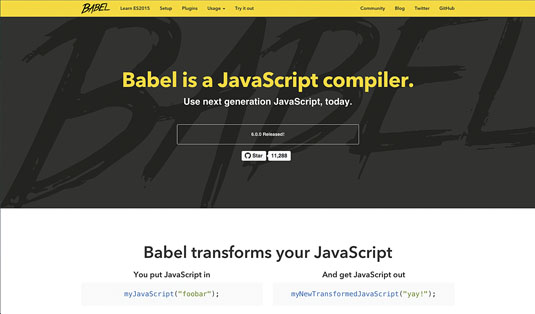
This imposed many problems during the development. Variables declared with the var keyword are function-scoped and can be hoisted at the top within the scopes. Before ES6, the standard for declaring variable was var.ĮS5 had only Global Scope and Functional Scope. let and const keywordsĮS6 introduced the new let and const keywords for declaring variable. Now you must be thinking, what are the features that brought significant changes to the JavaScript Language. The answer is: too many to list in Quora The ECMAScript specs that came out in 2015 as ES6 added so many new features, and many of them are now. The following update came with some major implementation on how JavaScript programming language should work. Its the newer version of JavaScript introduced in 2015. Table of contentsĮcmaScript or ES6 is 6th major revision of ECMAScript language. Hope you find it helpful for your journey with JavaScript. The findIndex() Array method is similar to find(), but it will return the first index of the matching value.Hello there, People. Assign a variable var color = 'blue' let animal = 'lion' if ( true ) A var is function-scoped, meaning only functions will introduce a new scope. There are a few important differences between the new keywords and the previously existing var keyword.īoth let and const are block-scoped, meaning the variable can be scoped to any block, such as if, for, or while. Now you can also assign values with let and const. Previously, there was only one way to declare a variable in JavaScript – the var statement.

One of the most important new additions of ES6 are let and const statements. In this article, we’ll go over some of the most commonly used features of ES6. You can still write all the same JavaScript code from the previous versions, but new syntax and features are now available.

It’s important to note that ES6 is not a different language, but simply the next version of ECMAScript, much like HTML5 is the next edition of HTML. It is still the common convention to use a bundler like webpack to run Babel and compile ES6 down to code that older browsers can understand, but according to Can I Use, around 90% of all browsers can natively understand ES6 syntax. When ES6 was first introduced, the features were not available on the vast majority of browsers, and it was necessary to use a compiler like Babel if you wanted to utilize any of the features. This version is commonly known as ECMAScript2015 or ES6.

The sixth edition of ECMAScript – the scripting language specification by which JavaScript is standardized – introduced many new features, upgrades, and shortcuts to the JavaScript programming language. Learn about the new ES6 features, enhancements, and shortcuts introduced to the JavaScript programming language.


 0 kommentar(er)
0 kommentar(er)
